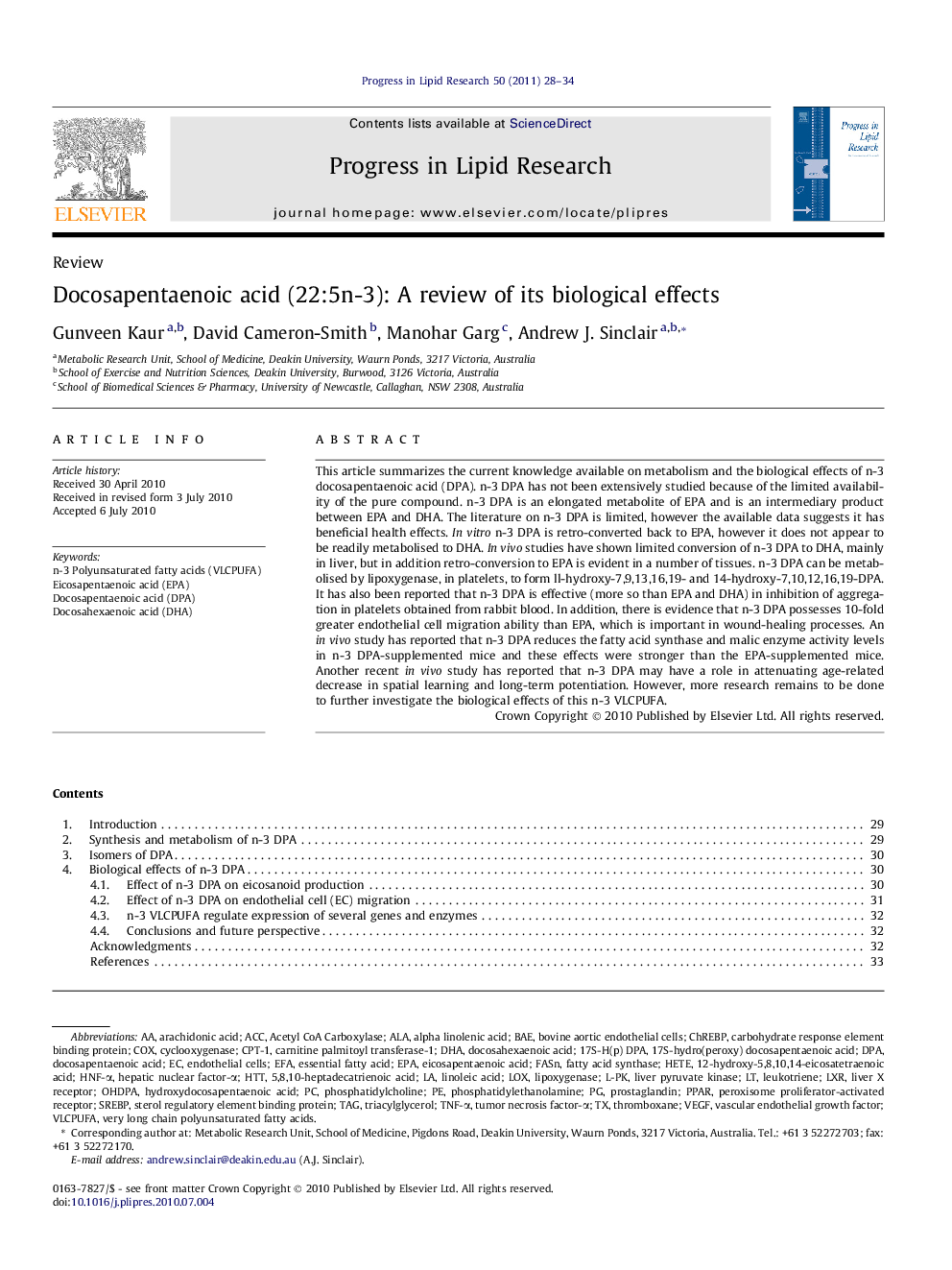| Article ID | Journal | Published Year | Pages | File Type |
|---|---|---|---|---|
| 10842927 | Progress in Lipid Research | 2011 | 7 Pages |
Abstract
This article summarizes the current knowledge available on metabolism and the biological effects of n-3 docosapentaenoic acid (DPA). n-3 DPA has not been extensively studied because of the limited availability of the pure compound. n-3 DPA is an elongated metabolite of EPA and is an intermediary product between EPA and DHA. The literature on n-3 DPA is limited, however the available data suggests it has beneficial health effects. In vitro n-3 DPA is retro-converted back to EPA, however it does not appear to be readily metabolised to DHA. In vivo studies have shown limited conversion of n-3 DPA to DHA, mainly in liver, but in addition retro-conversion to EPA is evident in a number of tissues. n-3 DPA can be metabolised by lipoxygenase, in platelets, to form ll-hydroxy-7,9,13,16,19- and 14-hydroxy-7,10,12,16,19-DPA. It has also been reported that n-3 DPA is effective (more so than EPA and DHA) in inhibition of aggregation in platelets obtained from rabbit blood. In addition, there is evidence that n-3 DPA possesses 10-fold greater endothelial cell migration ability than EPA, which is important in wound-healing processes. An in vivo study has reported that n-3 DPA reduces the fatty acid synthase and malic enzyme activity levels in n-3 DPA-supplemented mice and these effects were stronger than the EPA-supplemented mice. Another recent in vivo study has reported that n-3 DPA may have a role in attenuating age-related decrease in spatial learning and long-term potentiation. However, more research remains to be done to further investigate the biological effects of this n-3 VLCPUFA.
Keywords
EPA12-hydroxy-5,8,10,14-eicosatetraenoic acidTAGVLCPUFAliver pyruvate kinaseL-PKDocosapentaenoic acid (DPA)BAECPT-1SREBPChREBPLXRhttEFAPPARALAACCDPACOXcyclooxygenaseacetyl coA carboxylaseArachidonic acidEicosapentaenoic acidEicosapentaenoic acid (EPA)docosapentaenoic aciddocosahexaenoic acid (DHA)docosahexaenoic acidLinoleic acidalpha linolenic acidfatty acid synthaseEssential fatty acidvery long chain polyunsaturated fatty acidsLOXthromboxanetriacylglyceroltumor necrosis factor-αDHAEndothelial cellsBovine aortic endothelial cellsVascular endothelial growth factorVascular Endothelial Growth Factor (VEGF)TNF-αFasnphosphatidylcholinephosphatidylethanolamineLeukotrienelipoxygenaseHETEsterol regulatory element binding proteincarbohydrate response element binding proteinprostaglandincarnitine palmitoyl transferase-1liver X receptorperoxisome proliferator-activated receptor
Related Topics
Life Sciences
Agricultural and Biological Sciences
Food Science
Authors
Gunveen Kaur, David Cameron-Smith, Manohar Garg, Andrew J. Sinclair,
